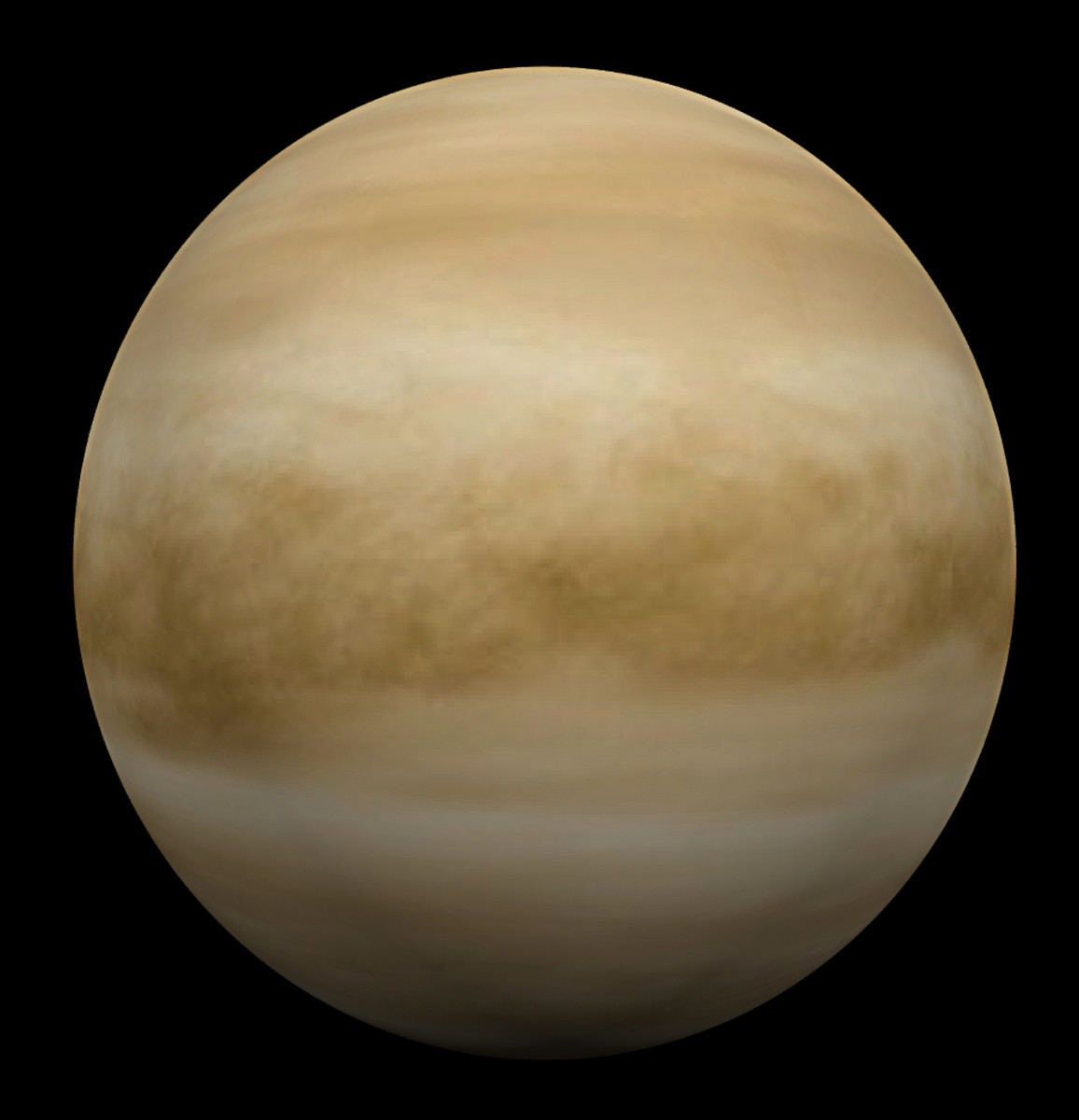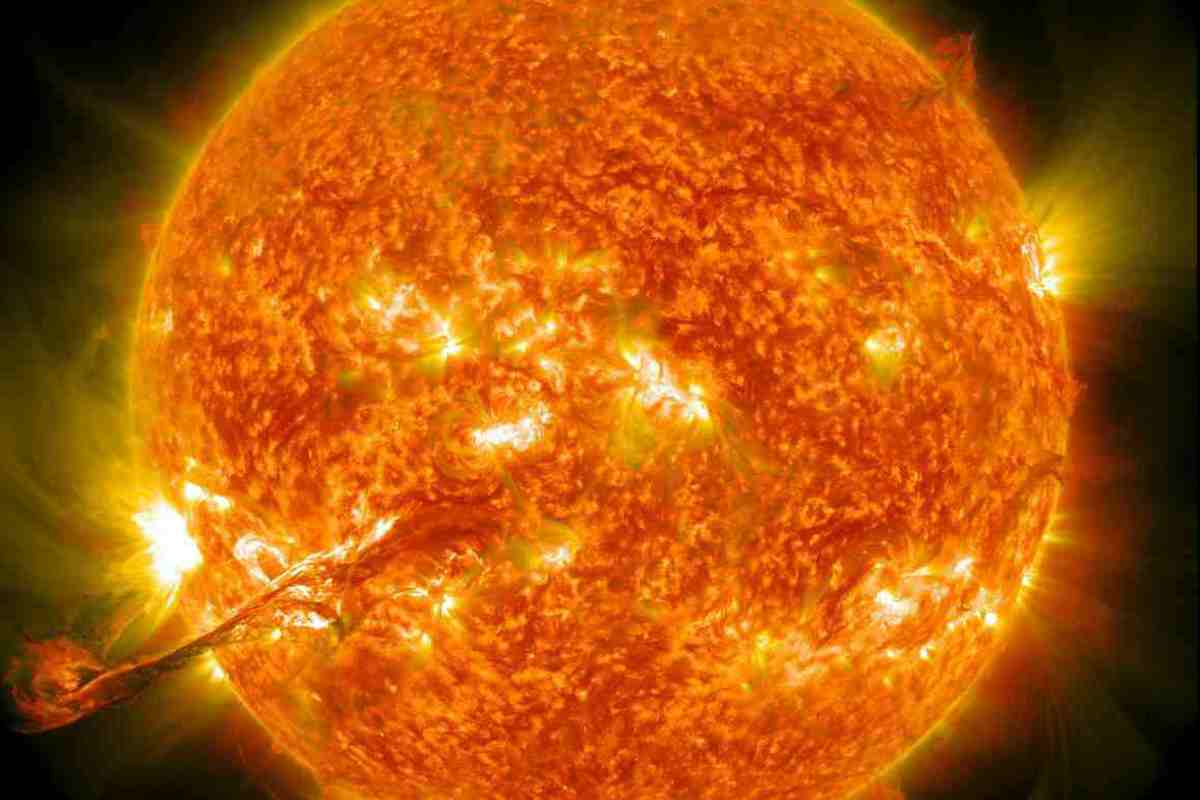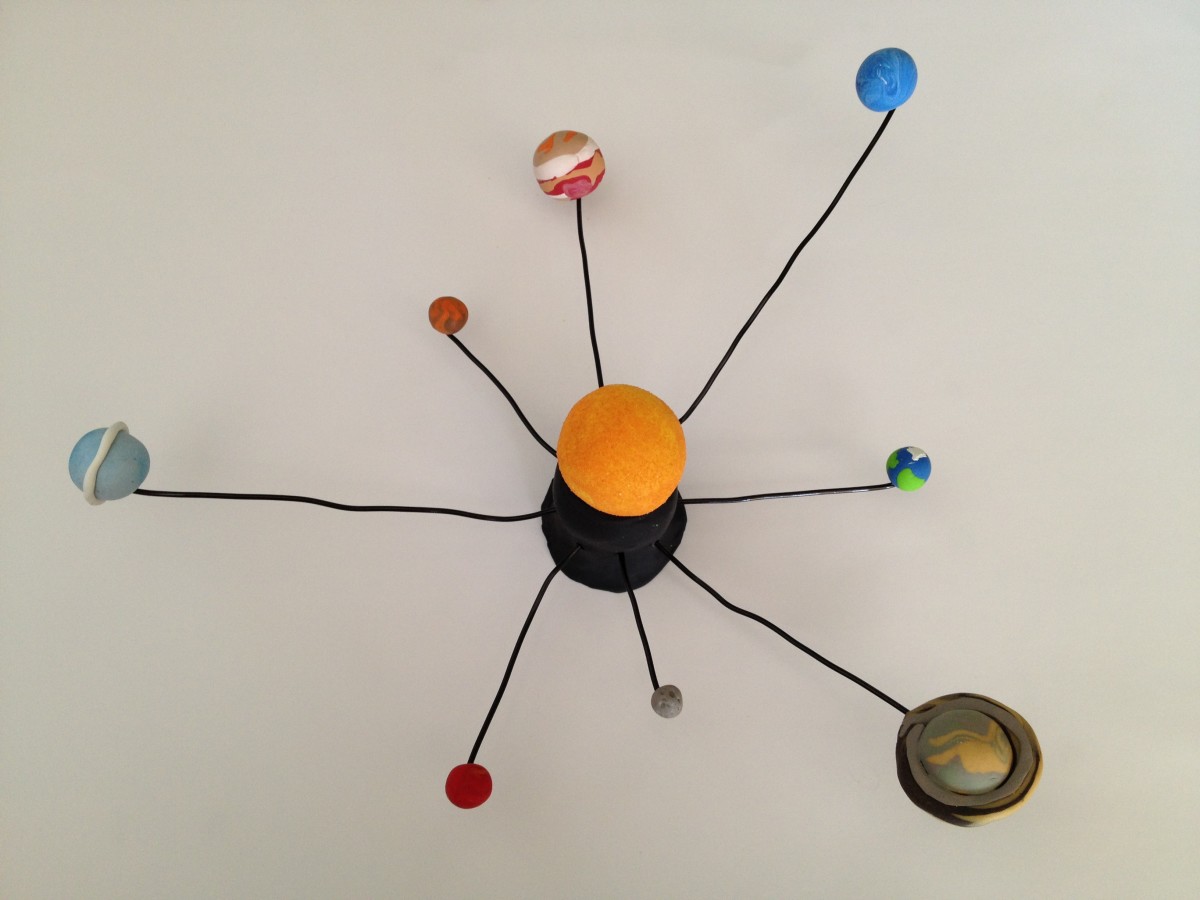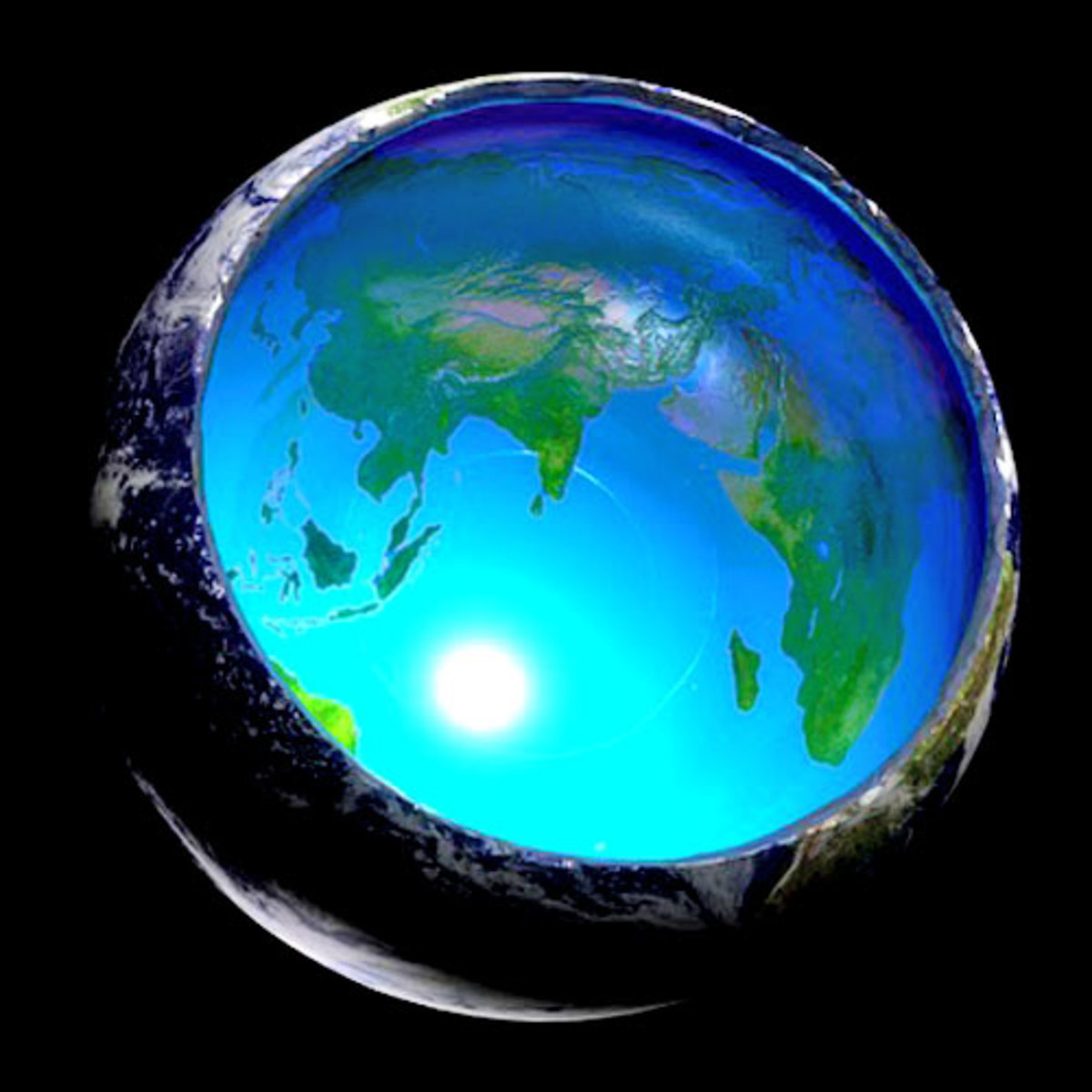Orbital Analysis of the Solar System

A Solar Perspective; Planetary Alignments and their Influences
“And there shall be signs in the sun, and in the moon, and in the stars; and upon the earth distress of nations, with perplexity; the sea and the waves roaring; Men's hearts failing them for fear, and for looking after those things which are coming on the earth: for the powers of heaven shall be shaken." Luke 21:25
One of the criticisms lodged against astrologers is their stubborn geocentric view. But as we live on the earth and view the cosmos therefrom with the exception of a handful of lunar astronauts, the geocentric view becomes our reference to the rest of it. Astrologers and astronomers both measure the solar system from the sun-earth ecliptic and set that as the starting point. Further both mark zero degrees Aries as the starting point of the zodiac, except for sidereal astrologers such as the Hindus and the Maya. These are conveniences to make things easier to explain. It is, however, far from the real situation. The orbit of the Earth itself is inclined to the sun's equatorial plane by 7.25 degrees. The earth has its own nodes with respect to the solar equator measured as 9 and 189 degrees respectively in the standard astronomical celestial orbital “circle”. The earth is north-most with respect to the sun when the earth is at 249 degrees and south-most at 99 degrees. As we measure all the planetary orbits by the former measure of the ecliptic, we get a skewed picture of the real situation when convention sets the ecliptic as the zero point. Other measures like eccentricity, the apsides, elongations and the like are all measured in relation to the sun. Those looking for the orbital inclination of the planets to the solar equatorial plane defined as the perpendicular to the rotational axis, will be hard pressed to find that data set.
One may ask why this is important and the answer becomes clear when we examine the path of the planets path on the background of the stars in relation to the sun. When clusters of nodes are shown, we can see concentrations of planetary influence at certain points in relation to the sun and the standard zodiac. The earth after all, is one of the planets orbiting the sun and its orbit is also inclined. For our geocentric view, tracking the planets through the zodiac is seen from the earth, so the ecliptic related inclinations are also important, at least from the view we get from the earth. We will look at both data sets and determine from the geocentric one, when various planets pass through points like the nodes, the equinox and solstice points, the heart of sky and the dark rift of the Maya viewpoint. Then we will look at the viewpoint of the sun and see what can be gleaned from that perspective.
Orbital inclination data
Planet -->
| Mercury
| Venus
| Earth
| Moon
| Mars
| Jupiter
| Saturn
| Uranus
| Neptune
| Pluto
|
Orbital Inclination (degrees ecliptic)
| 7.0
| 3.4
| 0.0
| 5.1 (earth equator)
| 1.9
| 1.3
| 2.5
| 0.8
| 1.8
| 17.2
|
Orbital nodes degrees (ecliptic)
| 38, 218
| 66, 246
| 9, 189 (sun)
| 18.6 yrs Retrograde
| 39, 219
| 90, 270
| 103, 283
| 64, 244
| 121, 301
| 100, 280
|
Orbital nodes degrees (solar)
| 290.5, 110.5
| 249, 69
| 9.5, 189.5
| Not Applicable
| 4, 184
| 9, 189
| 249, 69
| 10, 190
| 1, 181
| 78, 268
|
You might not see all of the data, particularly Pluto and Neptune. Simply use the bottom scroll bar to access it.
From the table and illustration we can see four main points of concentration on the sun-planet-solar equatorial line. The most pronounced of these is the cluster at 9 to 10 degrees of the standard zodiac where three planets have their solar equatorial nodes lined up within a degree. These planets are the Earth, Jupiter and Uranus. That location is at 9 to 10 degrees of Aries, and its opposite at Libra. Other planetary nodes that lie close to here are Mars and Neptune. According to this, a sensitive point in the solar system is when in time and place, the planets Earth, Jupiter, Uranus, Mars and Neptune are around this part of the sky, it could signify great changes on the sun and the planets involved. From our perspective, when the sun appears in the standard zodiac to be in 9 to 10 degrees Aries with Jupiter, Uranus, Mars and Neptune are in opposition. When the moon also line up at this time and place in the annual transit, the earth will feel the impact in particular.
What we need to determine at this time is when this kind of alignment occurred in history and when it will occur in the future. At this point, the exceedingly rare conjunction shown in April 9, 2011 and 23 September 2011, have not been located in the historical context. The three principle planets in the search were Jupiter with its11.86 year cycle, Uranus with its 84.1 year cycle and Earth with a 1 sidereal year cycle. The lineup found in April 9 and September 23 is close to the sensitive point of 9-10 degrees Aries in the standard zodiac, but not exactly there.
9 April 2011 Note the alignments
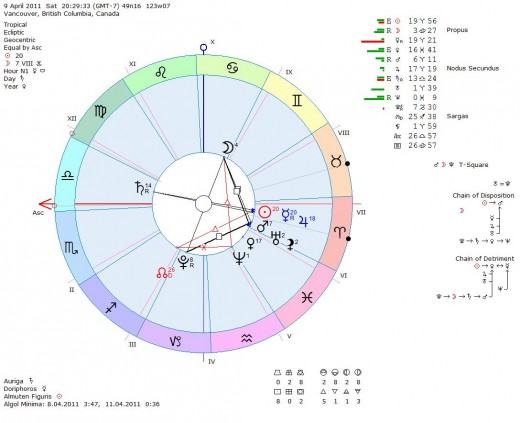
What is interesting is the link to the Mayan calendar with this horoscope. On April 9, 2011, the moon was in the heart of sky, which is a significant to the Maya. This is during lunation # 3 of the new long count on day 109, which commenced with the eclipsed full moon in the heart of sky on December 21, 2010.
9
Apr. 2011: Demo against war in Libya and hecklers on left disagree on
reliance on UN by Libyans. Hundreds killed in Yemen protests.
Egyptian army cracks down on protesters, Shooting in Netherlands
mall. Street battles in Libya continue. Iceland rejects paying
billions to UK on debt. US gov't barely avoids shut down. Gaza strike
results in deaths. Massive CME from sun due to pass earth on 10th.
23 September 2011, an even tighter alignment
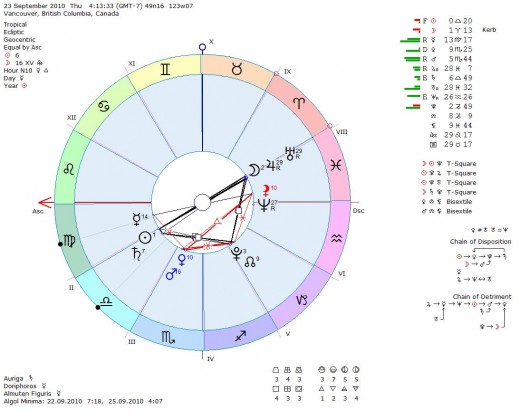
Source of the Olmec-Maya Sacred Calendar
- Event Clustering and Stochastic Processes
This pattern is sometimes referred to as a drunkard's walk. The lines near the top and right mark Cartesian coordinates and the origin where X=0 and Y=0. The walk is long and torturous, but the actual distance... - The Natural Source of the 260 Day Sacred Calendar
The Maya kept note of six important days in their year. Four of them we can identify readily, being the winter and summer solstices and the fall and spring equinoxes. The other two important days were the days...
Economic News that is Relavent to the Times: Follow this Source
- A Global View: Five Central Bank Decisions Serve as Warnings!
This past week we heard from a slew of key central banks on monetary policy. And when it was all said and done, we got important information on what to expect from the markets and economies going forward.


